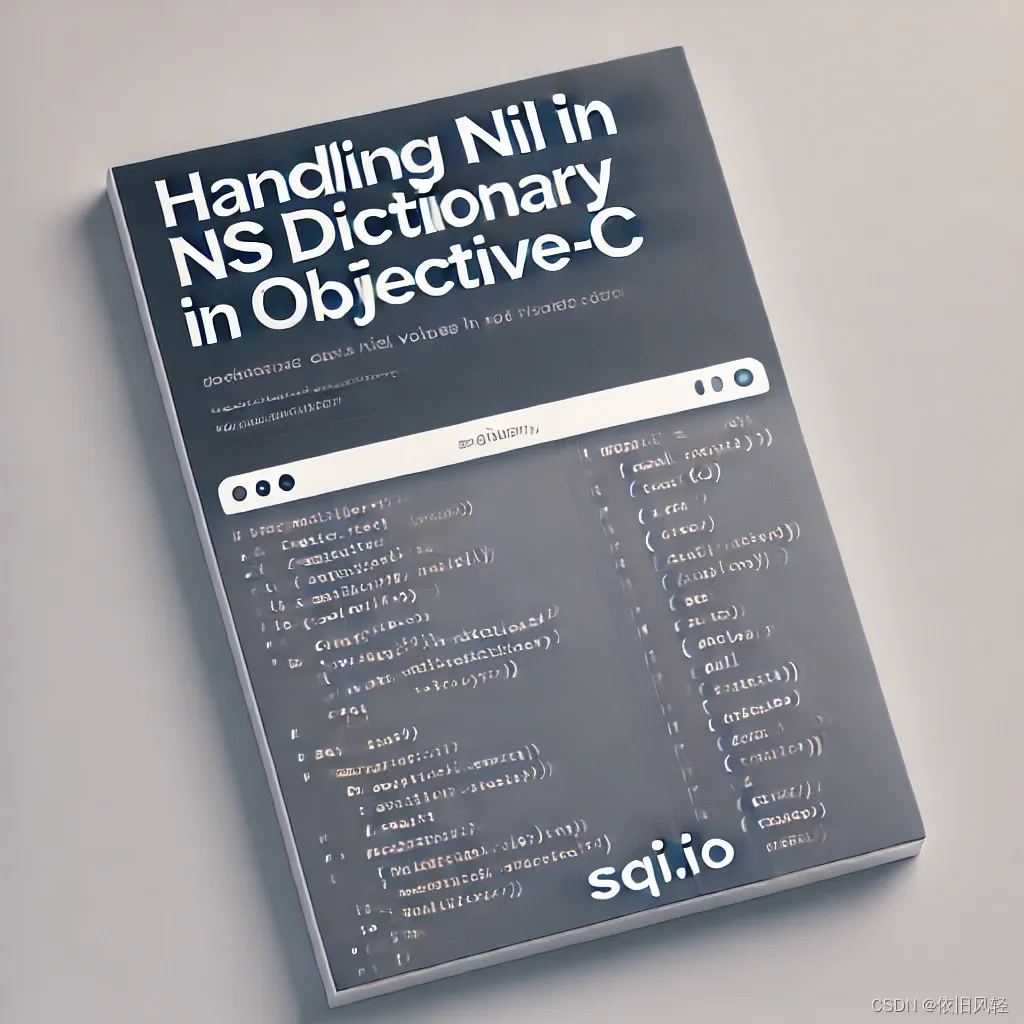Handling nil Values in NSDictionary in Objective-C
When working with Objective-C, particularly when dealing with data returned from a server, it’s crucial (至关重要的) to handle nil values appropriately (适当地) to prevent unexpected crashes. Here, we explore two common ways to insert values into a NSMutableDictionary and how they behave when the value is nil.
Scenario (情景)
Consider the following code:
NSString *value = model.value; // Data returned from the server
NSMutableDictionary *dic = @{}.mutableCopy;
[dic setObject:value forKey:@"key"]; // Method 1
dic[@"key"] = value; // Method 2
Let’s analyze what happens in each method if value is nil.
Method 1: setObject:forKey:
[dic setObject:value forKey:@"key"];
If value is nil, this line of code will cause a runtime exception and crash the application. This is because NSMutableDictionary does not allow nil values.
Method 2: Keyed Subscript Syntax (键下标语法)
dic[@"key"] = value;
If value is nil, using the keyed subscript syntax (键下标语法) will remove the key-value pair from the dictionary if it exists, or do nothing if it doesn’t. This method is safer as it avoids crashes and handles nil values gracefully (优雅地).
Conclusion
- Method 1 (
setObject:forKey:) will crash if thevalueisnil. - Method 2 (keyed subscript
[]) will safely remove the key ifvalueisnilwithout crashing.
Best Practice
To avoid potential (潜在的) crashes and ensure your code handles nil values appropriately (适当地), use the keyed subscript (键下标) method or check for nil before inserting into the dictionary:
if (value != nil) {
dic[@"key"] = value;
} else {
// Handle the nil case, e.g., log or set a default value
NSLog(@"Warning: value is nil");
dic[@"key"] = @"default"; // Or choose not to set the key
}
This approach increases the robustness (健壮性) of your code by preventing unexpected crashes and handling nil values in a controlled manner.

本站资源均来自互联网,仅供研究学习,禁止违法使用和商用,产生法律纠纷本站概不负责!如果侵犯了您的权益请与我们联系!
转载请注明出处: 免费源码网-免费的源码资源网站 » Handling `nil` Values in `NSDictionary` in Objective-C

发表评论 取消回复